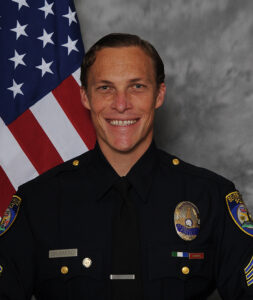The tragic mass shootings over the weekend in El Paso and Dayton, Ohio, in which 31 people were killed and scores wounded, have left the nation reeling. How did we get to this point? We’ve asked that question so many times but with no result. More important now is determining how we get out of this.
There have been 253 mass shootings so far in 2019, according to the Gun Violence Archive. Whenever these attacks occur, we hear the expected platitudes, but these thoughts and prayers are uttered so often they start to lose meaning.
As a former FBI special agent and career law enforcement officer, when I consider the mass violence occurring on this scale across the country, I reach one conclusion: This is a gun issue. Whenever the topic of gun control is raised in relation to mass violence, public debates often deteriorate into arguments on constitutional philosophy — from which no real solutions emerge. Gun ownership is a component of American citizenship, and it is hardly under threat. I myself am a gun owner.
This isn’t about the Second Amendment. The time is long past for Americans, particularly our elected leaders, to check their partisan leanings on guns and develop workable solutions to a problem that is only getting worse. It’s about finding a constitutionally acceptable method for keeping guns away from those who would use them to murder their fellow citizens. That requires leadership. We’ve elected our leaders; we need to see real action.
Understanding Mass Shootings
Broadly defined, a mass shooting consists of at least four fatalities (excluding the offender or offenders) resulting from use of a firearm. While the individual shooters, targets, and motivations for the attacks vary, the weapon is the same. Addressing the motivating factors behind mass violence is critical, but it is not enough. From research to real-world experience, we understand more today about the characteristics of people who commit mass violence than ever before — and yet we are suffering on average more than one mass shooting per day.
We will not find our way out of this cycle of death unless we address the means of violence, as well as the motivation. Here are proposals that could be introduced with bipartisan political will. None of them removes or compromises Second Amendment provisions:
Extreme Risk Laws
Fifteen states and Washington, D.C., have enacted “Extreme Risk” laws, which allow family members and law enforcement to intervene when there are warning signs of violence. The laws permit a court petition for an order to temporarily remove firearms from dangerous situations, often known as an Extreme Risk Protection Order. If the court finds a person is at risk of harming him or herself or others with a firearm, that person is prohibited from purchasing or possessing guns while the order is in effect. In 51 percent of mass shootings, from 2009 to 2017, the attackers exhibited warning signs suggesting that they posed a risk to themselves or others, according to Everytown for Gun Safety.
Mandatory Firearms Safety Training
When I served in the FBI and other police departments, firearms training was a regular activity. It is perplexing that we as a nation have decided to require education, training, licensing, and regular renewals to drive a motor vehicle, but we have virtually no requirements for people to own and use a a gun. Gun owners should be required to take mandatory firearms safety training.
Mandatory training serves several functions. It requires the gun owner to express a minimum level of respect and proficiency in handling the weapon. This moves the weapon from the realm of violent fantasy into the very real world of routine and safety. It also gives trained instructors the opportunity to observe a gun owner with the weapon and note any troubling actions or words.
Ban Assault Rifles
Military grade weapons have no place in civilian life. We actually had a ban in the 1990s, when support was at 50 percent. The most recent effort was defeated in 2013, after mass shooting at Sandy Hook School in Newtown, Conn. I would return to the notion that Americans also want to keep law enforcement safe. A 2007 report by the International Association of Chiefs of Police recommended that Congress enact an effective ban on military-style assault weapons in order to curb the ability of individuals to “outgun” law enforcement officers.
Universal Background Checks
We need to close the loophole that allows unlicensed firearms sellers to sell a weapon without performing a background check. Whenever this recommendation is raised, it is typically followed by arguments that background checks would not have prevented mass shootings. Perhaps, but when every firearm sale is governed by the same standard, it contributes to a higher culture of respect and concern for weapons, which in turn moves toward national gun safety. The president has called for ubiquitous background checks, members of the House and Senate have been advocating for these checks for years, and more than 90 percent of the public supports it. What exactly is it going to take to make this a reality?
Our “thoughts and prayers” mantra is not a solution, and it does nothing to soothe the grief of families whose loved ones have been murdered in mass shootings. No other nation has this problem to this degree. We have the capacity to address it, if we really want to.
On this sad day, that remains to be seen.
This piece was originally published by the Boston Globe.




